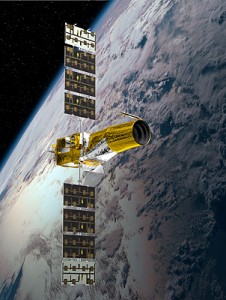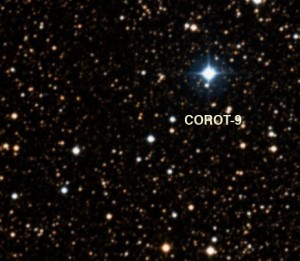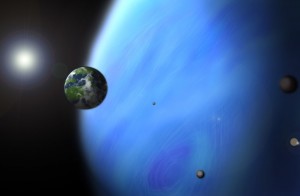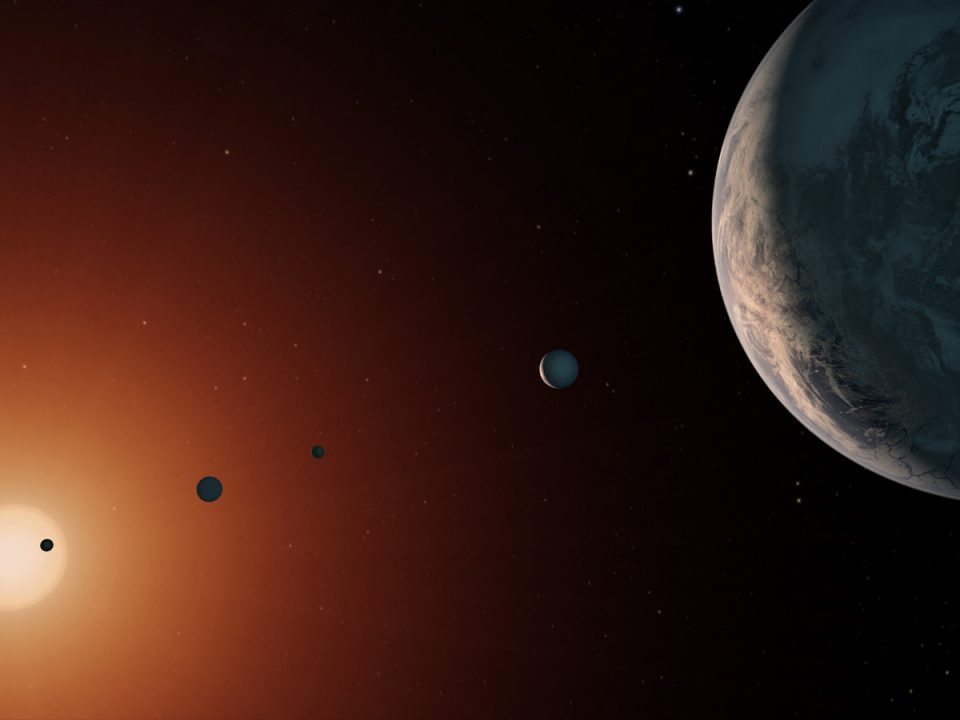Corot-9b: Did COROT discover a Pandora-like world?
Life at the SETI Institute: Meet myself :)
April 13, 2010SETICon in the Bay Area, California (Aug 13-15 2010)
April 19, 2010Hello,
I was in Europe last month to attend a workshop on asteroid size and shape and also to visit my colleagues at the observatoire de Paris. It was a very useful trip and the timing was perfect since the COROT consortium announced the discovery of a very interesting exoplanet named COROT-9b. It took me a while to write this post, but since this is an important discovery, I could not avoid to write about.
So what’s the big fuzz?
COROT is a small 30cm-telescope in orbit around Earth designed and managed by the CNES (the French spatial agency) which monitors the luminosity of hundred of stars using a wide-field of view camera. I mentioned the discovery of a Super-Earth (called COROT-7b which is now confirmed) using the same instrument in one of my previous posts.
This new discovery was important enough to be announced in a Nature Letter entitled “A transiting giant planet with a temperature between 250 K and 430 K”. Everything is in the title! Indeed, most of the transit exoplanets that we know so far are very close to their host star. They are called “hot-Jupiters” since they are large gaseous exoplanets with a temperature between 800-3200 K (530-3000 deg Celsius). I mentioned in my previous posts those discovered recently by the Kepler telescope using the transit method for which we measure the small attenuation in the brightness of the star produced by the crossing of the exoplanet between us and the star or the disappearance of the exoplanet behind the host star (an occultation). We know ~60 of them which were discovered and characterized by transit measurements.
The transit method is particularly useful technique since by itself it permits the characterization of the exoplanet determining its size and its distance to the star. However the combination of additional studies such as radial velocity (to detect the wobbling of the star due to the motion of the exoplanet) and spectroscopic studies (analysis of the light of the star itself) gives astronomers a wealth of information about the system itself. The Nature article contains a long list of parameters derived from this study, I am not going to go through all of them but only summarize those which seem to be the more relevant.
An unique planetary system
Corot-9, the host star, is located in Serpens Cauda, the tail of the Serpens constellation. Because of its distance (located at 1,500 light-year from us), it is quite faint with a visible magnitude of 13.4, so you will need a telescope to be able to see it. Because its color, temperature and mass are quite similar to our host star, Corot-9 is a brother of our Sun (like ~10% of the stars in our galaxy as discussed here). But we cannot claim that it is a “twin” of our Sun since its age is not well-known ranging from 0.15 to 8 Gyrs (our Sun is 4.5 Gyrs old).
The exoplanet itself, called Corot-9b, was detected through two 8h-transit events during 145 days of observations which started in April 2008. To confirm this transit the team led by H.G. Deeg from the IAC in the Canary Island collected radial velocity measurements (measure of the motion of the star due to the exoplanet) and observed the transit from the ground with 1m-class telescope. All these additional observations validated the genuineness of this discovery. Putting together the data, astronomers could derive important characteristics of the planetary system.
Corot-9b is a unique exoplanet. Because it orbits at 0.4 AU from its sun, equivalent to the distance between Mercury and the Sun describing a low-eccentric orbit (e~0.2), its period is ten times longer than any other planets discovered by this method. It has a similar size than Jupiter but slightly lighter (80% the mass of Jupiter) implying a lower density, so a smaller rocky nucleus. The astronomers estimated that this exoplanet can be of class III characterized by low albedo of 0.1 (a dark planet) because of a clear atmosphere without clouds with a temperature of 380 K, or a class II planets with lower temperature (~250 K), bright (albedo of 0.8) because of the presence of clouds of water on the top of its atmosphere.
Will we ever record a picture of Corot-9b?
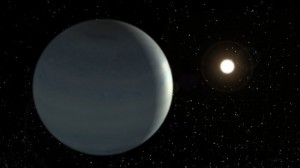
Artistic view of Corot-9b if it was a Class II exoplanet characterized by a bright bluish color due to clouds of water in the upper atmosphere
Corot 9b is orbiting at 0.41 AU around a star at 460 pc, so its angular separation will be 0.9 milli-arcsec. With classical imaging technique we will need a telescope with a 110m aperture (ideally located in space) to be able to observe the exoplanet in visible light! Several other techniques could be used but they are not yet fully mature to be used in space (interferometry).
An ecosystem on the moons of Corot-9b?
These large gaseous exoplanets are characterized by a large number of natural satellites (or moons), some of them could be as large as Mercury. You can just think about Jupiter and its Galilean moons Ganymede and Callisto. For those who have seen the movie Avatar, Pandora is a moon of a giant planet. Because the planet Corot-9b is always far from its host star (0.3-0.5 AU), I checked if any potential moons could have a surface temperature compatible with the presence of liquid water. If this moon is similar to our Moon or Mercury in surface composition (rocky surface with albedo of 0.07), the average temperature could be 430 K (160 deg C). With an Albedo of 0.6, similar to the surface like the icy satellites of Jupiter, the temperature remains high (T~350K, 80 deg C). It is quite improbable that if the planet formed at 5 AU, an icy satellite survived while it is migrating at 0.4 AU. Due to the temperature increase, it became a gigantic comet which should will disappear losing its material by sublimation. With the current COROT data, based on 2 transit lightcurves, a moon around Corot-9b would have been detected if it is 5 times larger than Earth!
While waiting for astronomers to collect a real image (or at least a spectra), let’s dream about Corot-9 planetary system with this superb image made by a fan of Avatar (Aeroflux) published in Ben Caldwell website.
Good night
Franck M.
